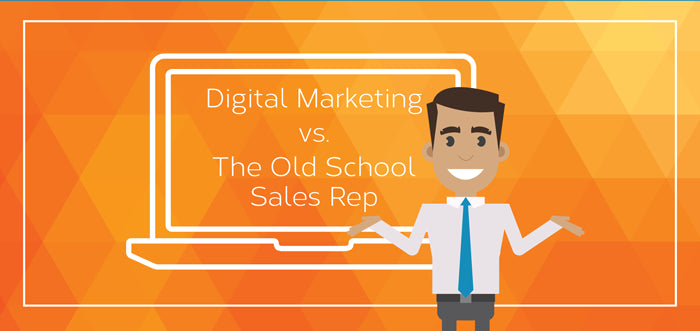
I got a call the other day from a company professing to be experts of search engine optimization (SEO) and search engine marketing (SEM). They said they could transform the way my company generated sales leads. Funny thing though, when I did a Google search to find “SEO and SEM marketing help” they did not show up. So I asked the sales rep on the phone “If you’re so good, why are you calling me? You say you know everything about SEO and SEM, but why aren’t leads streaming in? Shouldn’t the fish be jumping into your boat?” Crickets. No response. It drove home the point that sales people are not going away any time soon, but it also reminded me that the activities of sales people need to change if they are going to succeed.
Here are three things that sales people they need to embrace in order to be successful today:
#1. Stop making cold calls. In the above example, the salesperson that called me made a cold call. In 2016, there is no such thing as a cold call. This may upset a lot of owners and sales managers, but sales reps and your company need to build up some rapport with a contact before they pick up the phone. Each sales rep needs to keep track of all their prospects and their various data points, especially customer emails, in your customer relationship management (CRM) system. Quick tip: if you are not using a system like SalesForceor the like (there are many, many providers out there) you are holding your sales reps back. If reps are not logging into your CRM system and updating their customer contacts and lead lists every single day, then they either need to start doing it or retire. Why? Read on.
#2. Engage your customers and prospects through social media and targeted email marketing. On a bi-weekly basis I write blogs (just like this one). The blog is sent out directly via email, and on social media like LinkedIn to a list of qualified contacts. When a blog is emailed out, I can see who engages (i.e. clicks on the article/reads it). I can see which contacts have “bounced” (i.e.inactive email addresses). When people share or like an article on LinkedIn, it means they like the content and want others to know that they do. Following this formula means that a call is no longer a cold call. When the rep calls the contact they can reference an article or story was sent out last week. This is much better than starting the call explaining who you are, what you do, and why you are calling. An important tool for you within this process is an email marketing platform like Constant Contact or MailChimp to help manage your email campaign messaging and provide valuable analytics attached to each email you send. While the look of the email campaign and the messaging within it are paramount in its readability by your contacts, the analytics that email marketing campaign software, like those mentioned above, provide is crucial to your sales reps lead qualifying process.
#3. Keep bringing the customers back to your website. Useful/helpful content within a blog will bring people to a website and have them read a story. Your sales reps need to do the same. As an example, if you are selling a product or service, or giving the customer an offer (20% off your first online supplies order, introductory offer on a printer, 90 days of free service for Managed Desktop services, etc), then the sales rep should follow up the conversation with a link to that limited time and personalized offer on your website. Once again, your sales rep should monitor any uptake or follow through on offers.

If you are not satisfied with a sales rep’s performance or your sales in general, it’s important to make sure that you have invested in the infrastructure to make them successful.
- Does your company have a CRM like SalesForce?
- Are you regularly corresponding with your customers and prospects through helpful information?
- Are you keeping track of that activity and the engagement of your customers?
- Does your website enable customers to buy the products that you sell?
The above points are not optional: in order to ask your sales reps to change, you need to provide the tools and environment for them to do so. These tools are very accessible in terms of cost and management time, and once implemented you can monitor your reps’ activity and their progress better than ever before.
One thing that hasn’t changed? Activity still drives results. Show me a sales rep that engages with 20 customers a day, and I’ll bet they are successful. Now you can track this engagement easily. Now they know they are being tracked. That’s the part that has changed. Many “old school” sales reps disliked being tracked, but those that do the work have nothing to worry about. In fact, younger sales reps, millennials, actually welcome being tracked and recognized for efforts.
Do you need help getting started? Let’s talk.


